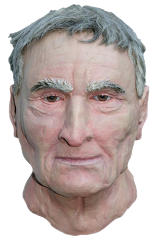 Over the last few weeks a few of our community have been struck low by malaria! With the rains have also come the mosquitoes. Malaria is a constant companion to many in Sub Saharan Africa. Malaria is a rampant killer in West Africa so much so that once the whole area was known as the 'white man's grave'! Not a sobering thought!! Thankfully we have ready access to medication and although for a few days it drains you of all energy most of our men are able to get back to being themselves within a few days.
Over the last few weeks a few of our community have been struck low by malaria! With the rains have also come the mosquitoes. Malaria is a constant companion to many in Sub Saharan Africa. Malaria is a rampant killer in West Africa so much so that once the whole area was known as the 'white man's grave'! Not a sobering thought!! Thankfully we have ready access to medication and although for a few days it drains you of all energy most of our men are able to get back to being themselves within a few days.Malaria is caused by a parasite called Plasmodium, which is transmitted via the bites of infected mosquitoes. In the human body, the parasites multiply in the liver, and then infect red blood cells.
Symptoms of malaria include fever, headache, and vomiting, and usually appear between 10 and 15 days after the mosquito bite.
 About 40% of the world’s population, mostly those living in the poorest countries, are at risk of malaria. Of these 2.5 billion people at risk, more than 500 million become severely ill with malaria every year and more than 1 million die from the effects of the disease.
About 40% of the world’s population, mostly those living in the poorest countries, are at risk of malaria. Of these 2.5 billion people at risk, more than 500 million become severely ill with malaria every year and more than 1 million die from the effects of the disease.
Malaria is especially a serious problem in Africa, where one in every five (20%) childhood deaths is due to the effects of the disease. An African child has on average between 1.6 and 5.4 episodes of malaria fever each year. And every 30 seconds a child dies from malaria.
Symptoms of malaria include fever, headache, and vomiting, and usually appear between 10 and 15 days after the mosquito bite.
 About 40% of the world’s population, mostly those living in the poorest countries, are at risk of malaria. Of these 2.5 billion people at risk, more than 500 million become severely ill with malaria every year and more than 1 million die from the effects of the disease.
About 40% of the world’s population, mostly those living in the poorest countries, are at risk of malaria. Of these 2.5 billion people at risk, more than 500 million become severely ill with malaria every year and more than 1 million die from the effects of the disease.Malaria is especially a serious problem in Africa, where one in every five (20%) childhood deaths is due to the effects of the disease. An African child has on average between 1.6 and 5.4 episodes of malaria fever each year. And every 30 seconds a child dies from malaria.
There is a lot of useful information on malaria on the Wikipedia site and also on the WHO site. Just in case some of you might be interested to read more on the subject!











No comments:
Post a Comment